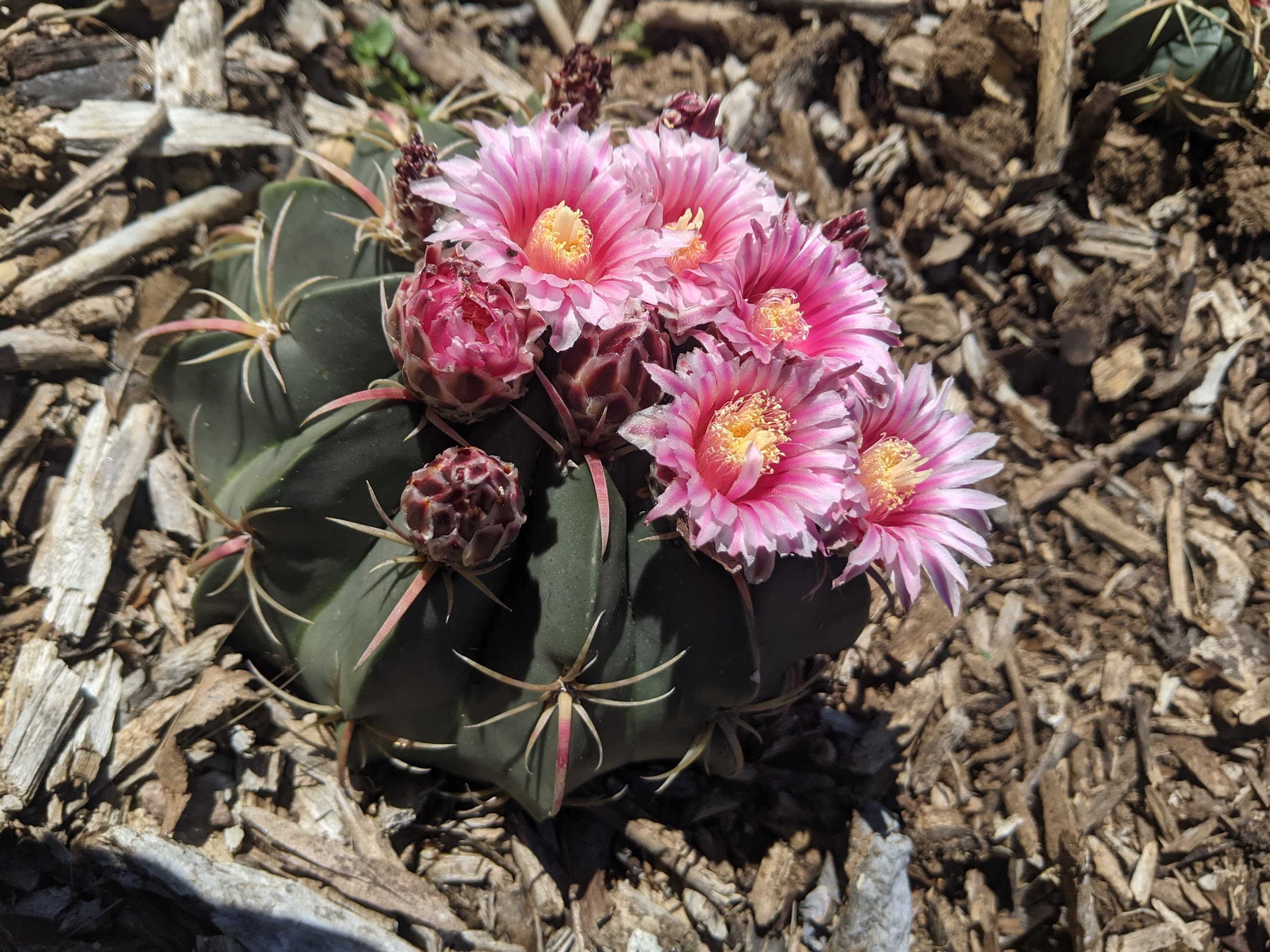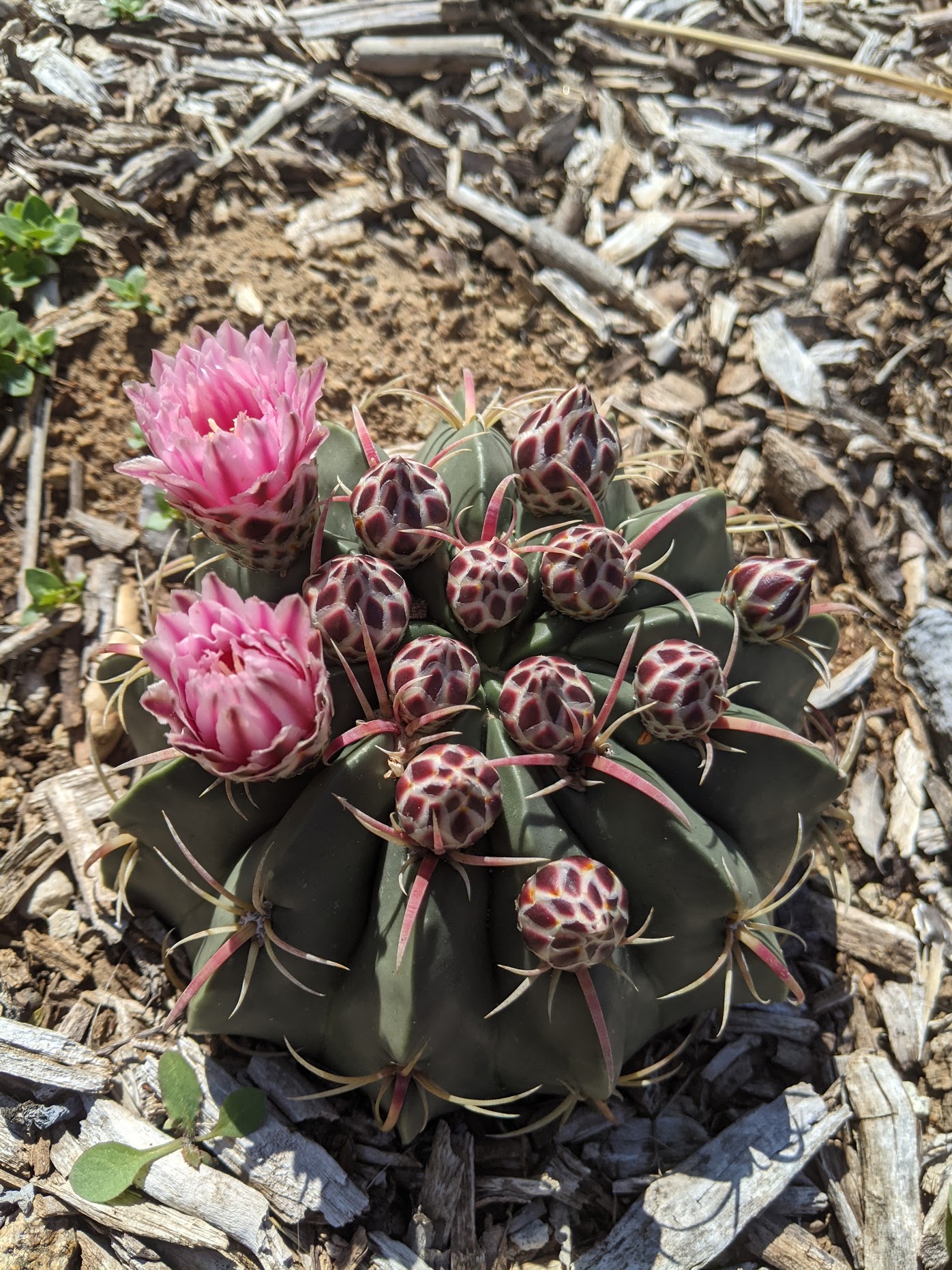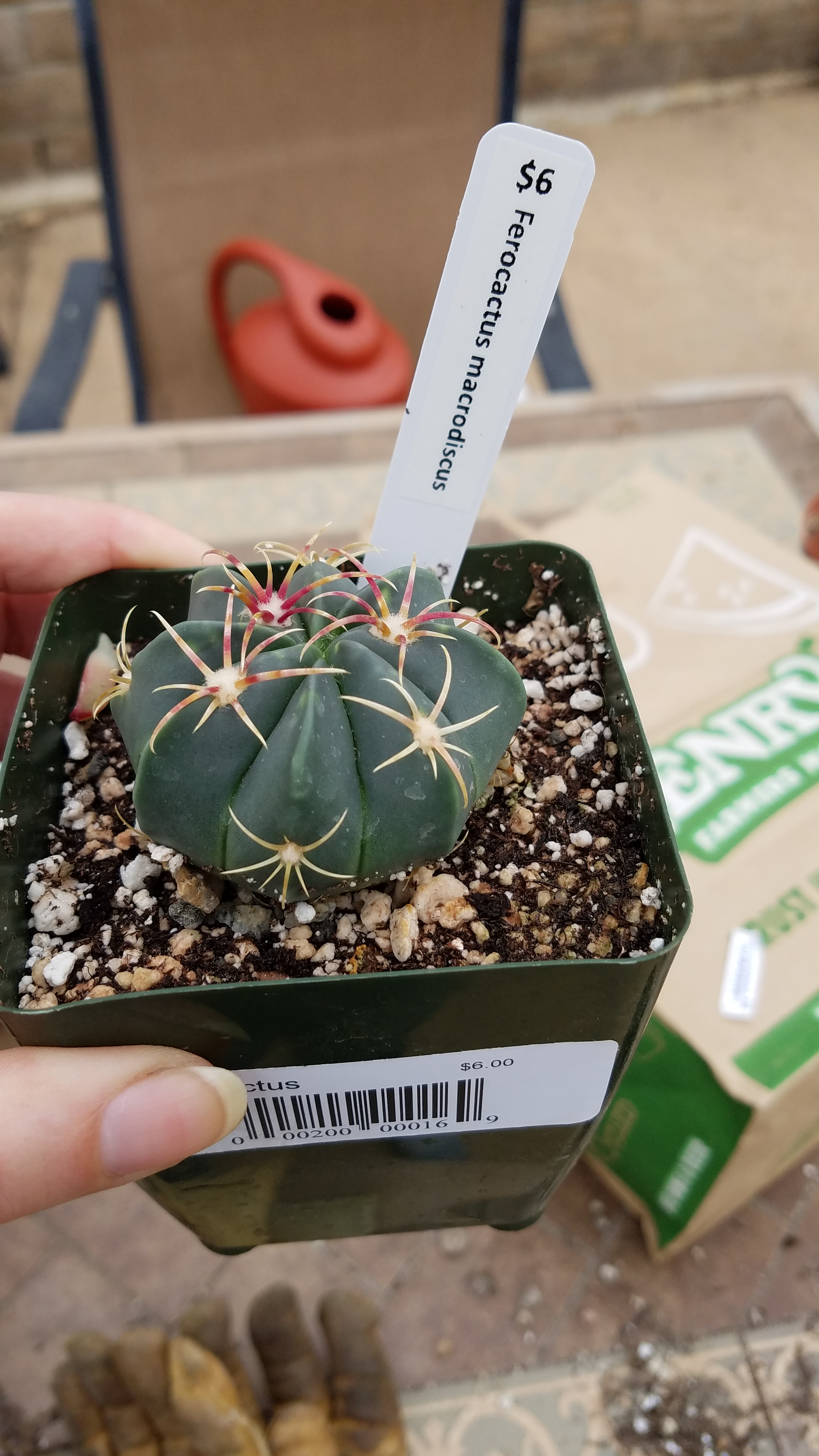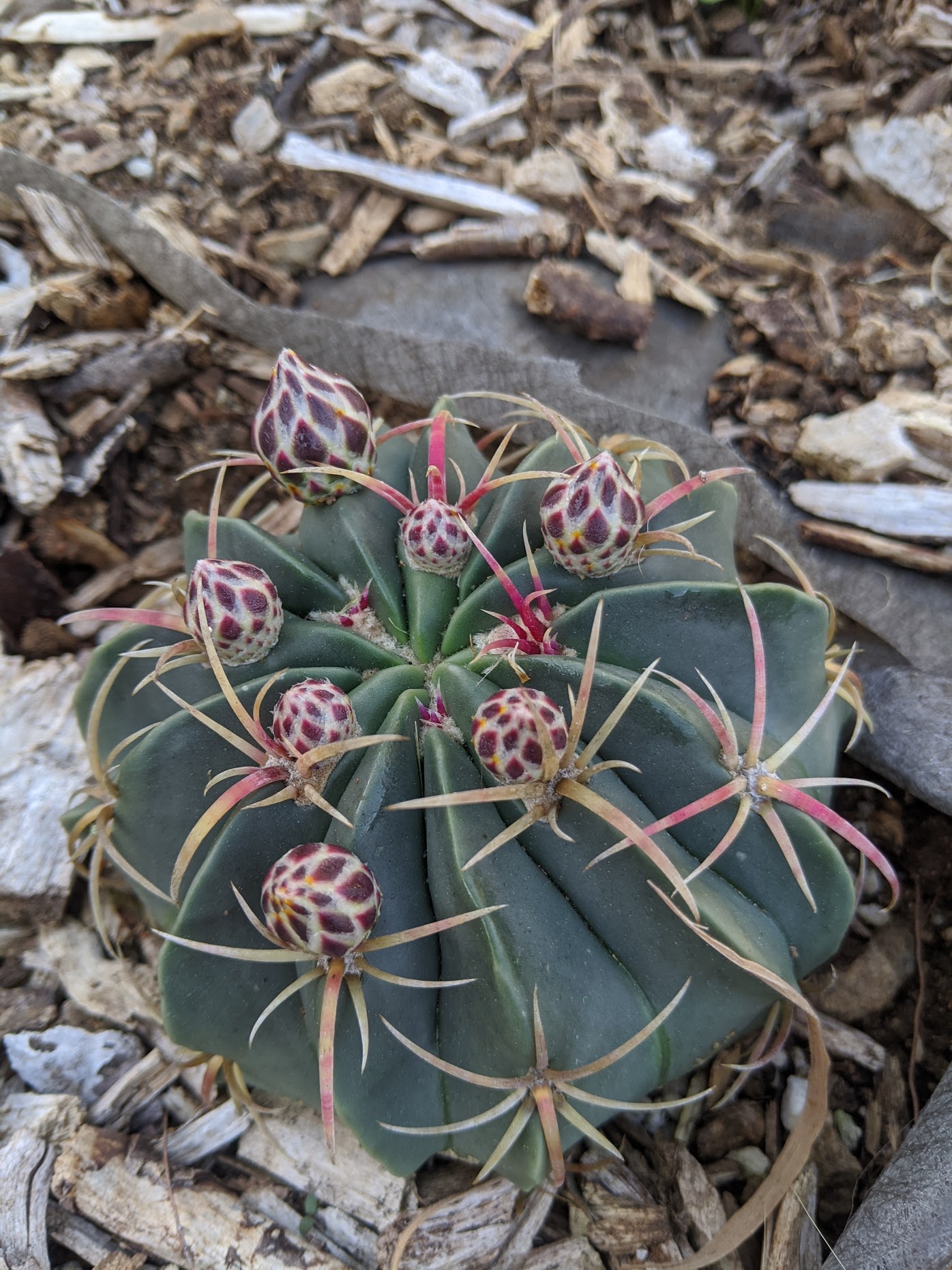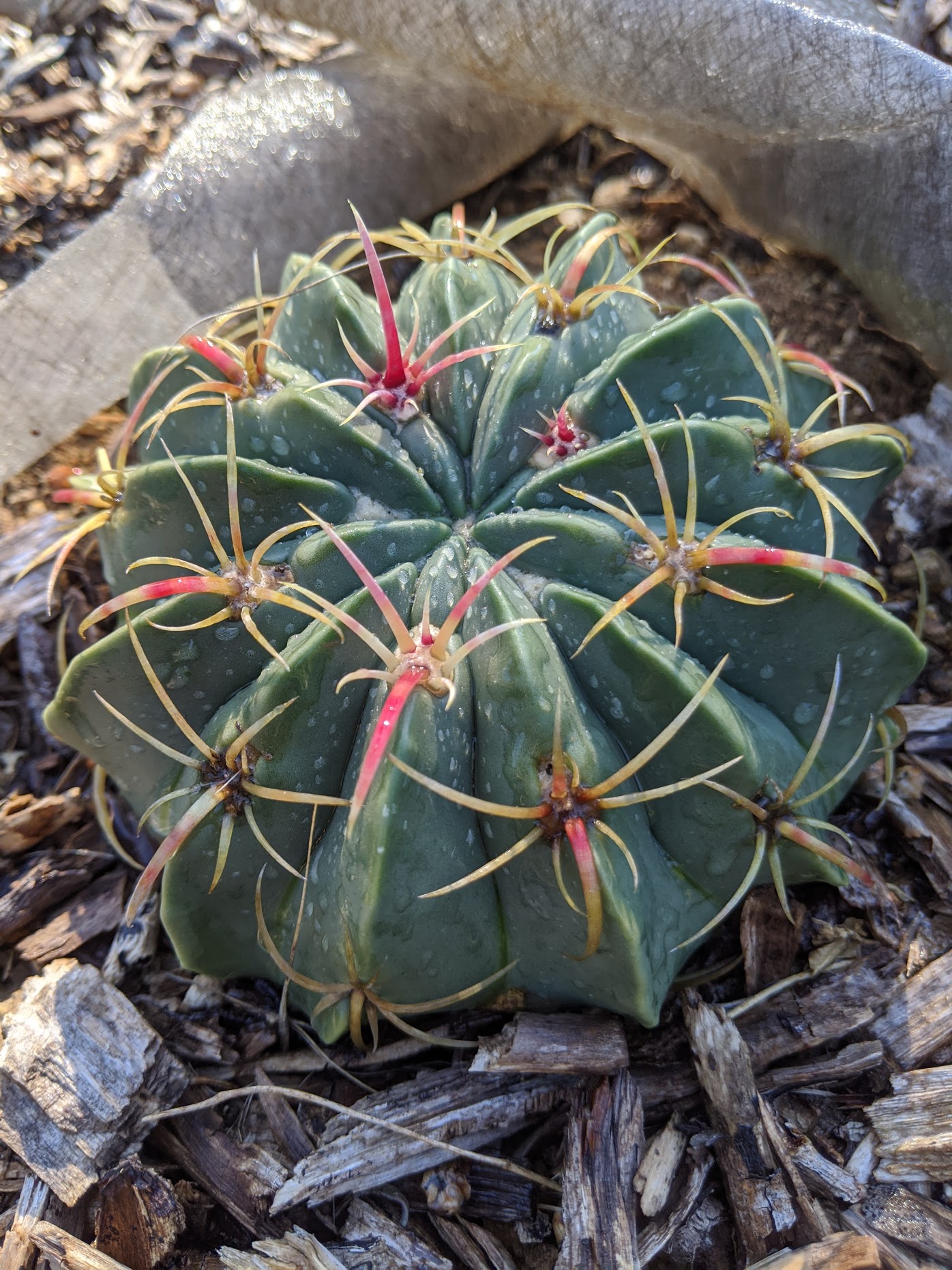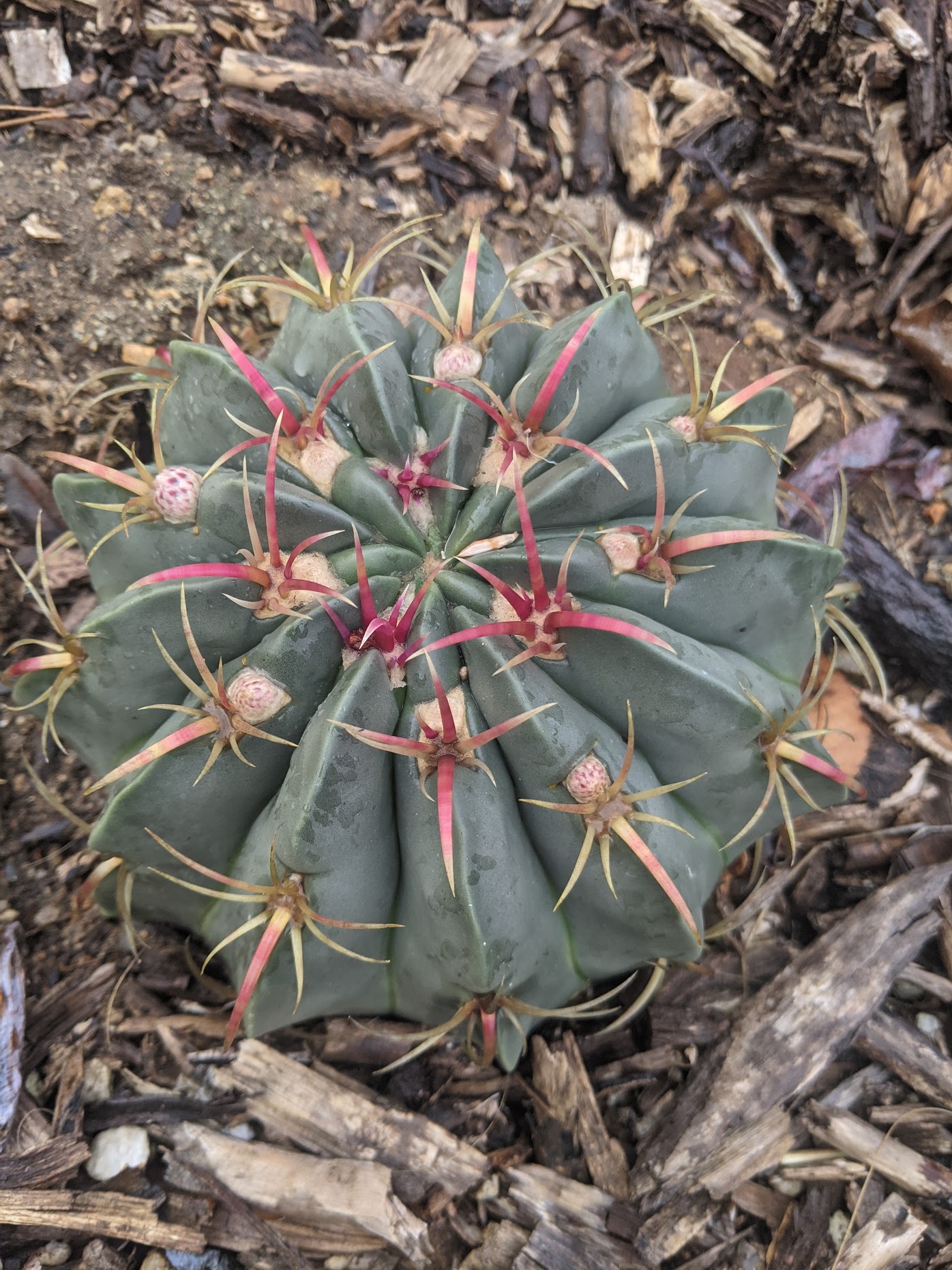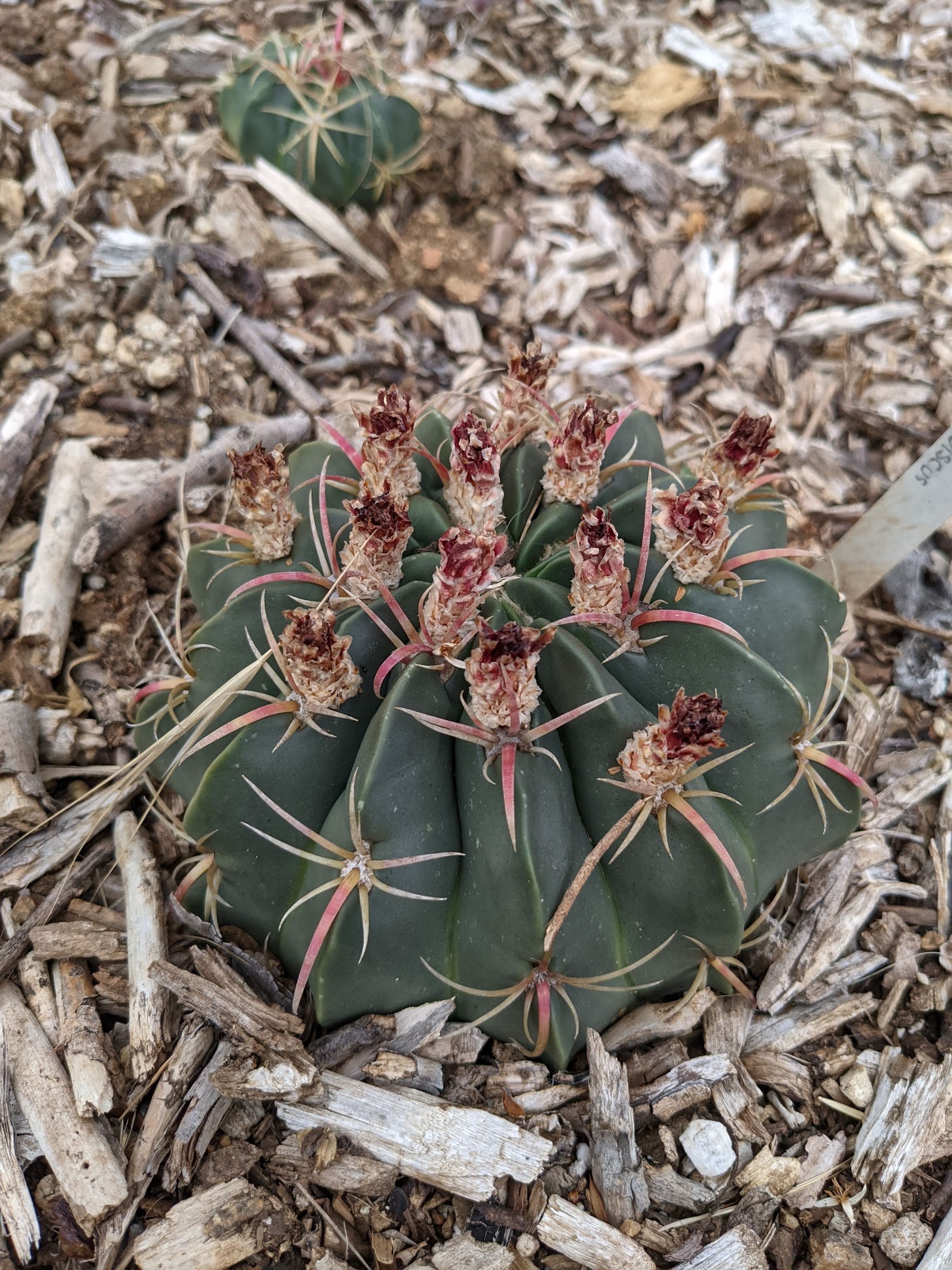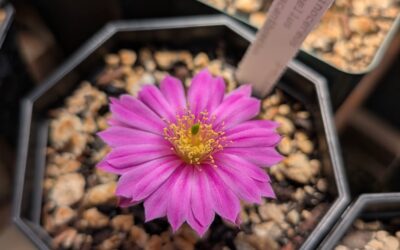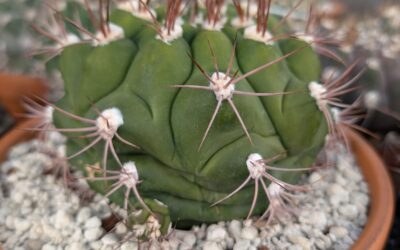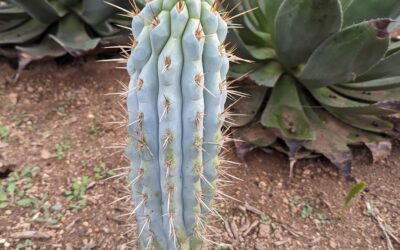This little cactus is unassuming, easy, and a charming little addition to any cactus collection. Ferocactus macrodiscus is a small-growing cactus, typically growing to about 12″ in diameter but exceptional plants may reach up to 24″. They have a nice, bright green body, sometimes blue-green, that contrasts nicely with the pink-red spines that are evenly spaced along the ribs.
Very cute little cacti that bloom at relatively small sizes, with some beginning to blossom at only 3 or 4 inches in diameter. In the wild, they share habitat with certain tillandsia species, as well as desert trees and bushes which can offer some shade. During dry periods in the Mexican desert they inhabit, they can sink down into the ground and become nearly invisible – very similar to my beloved mesembs, particularly lithops.
Their native region is the southern end of Mexico, around the Oaxaca area, where the weather is warm, bordering on hot, and rarely freezes or experiences temperatures much below 40F. Being in the Northern hemisphere, their seasons are the same as ours here in San Diego, just a bit milder than my area of inland North County.
My first Ferocactus macrodiscus, blooming profusely in-ground a few weeks ago (early April 2021). While they can bloom at smaller sizes, mine was about 5″ in diameter before the first flowers.
Preferred Temperatures and Light
While the region these come from rarely gets below 50F, I’ve found mine to tolerate winter temperatures down to 32F or even a little below with little fuss. The key is ensuring that they have nice, dry roots by the time cold winter weather hits (a mantra you should be repeating for pretty much all of your cacti).
I have had the easiest time growing mine directly in-ground; they are slow growing to start but seem even slower when kept in pots. They’re slow in the ground, too, but it feels slower when they’re in pots.
Because these are a smaller cactus, they tend to grow in more protected areas, such as shaded by bushes or trees. When growing yours, keep them somewhere with nearly full sun, but protected and shady during the hottest parts of the day (around 1 – 3 pm here).
Their natural climate also doesn’t usually get too extremely hot – so they are not fans of hot, dry heat combined with lots of bright sunlight. When we’re expecting a heat wave, I will cover mine with shade cloth each morning to protect them from the worst of the heat and sun. If yours are in a pot, you can simply move them somewhere shadier or bring them indoors to protect them.
Same blooming cactus, just a few weeks earlier in the year.
Blooms, Pollination, and Seed
My blooming-size Ferocactus macrodiscus has bloomed religiously every year in the month of March; I plan on keeping more precise tabs moving forward as I suspect the blooms open on nearly the same week each year. They are not self-fertile, so if you want to create seeds, you’ll need at least two plants. Based on how consistently they seem to bloom, I’m hopeful that next year all the in-ground macrodiscus will bloom, and I’ll have a nice genetically diverse sampling of seed to get going.
I do not fertilize my in-ground cacti, and aside from protecting it from extreme heat/sunlight, it gets no special treatment aside from regular water in summer. With this type of easy care, it blooms prolifically, and I heartily recommend them as endearing little globular cacti to put on a surprise show when spring rolls around.
Growth over time:
I got my first plant when it was roughly 2.5″ across in 2018, still small but about the size that most juvenile cactus are hardy enough to sell.
$6 for this size plant is pretty average locally at our cactus club sales, and my notes show this was from our February 2018 sale. I liked the little stripey pink spines, although only the newest ones tend to retain that color (I later found out).
After a few weeks in that pot, I upgraded it to a 5″ pot and kept it in a spot that was shaded for about half the day. It grew consistently, just not quickly. In the fall of 2019, I decided it’d look cute in the ground, and planted it in a little courtyard type area around our driveway.
Once in ground, it definitely seemed to grow faster.
Above is the cactus preparing to bloom in March 2020, and my notes indicate blooms opened from March 30th through April 5th last year. I regularly mulched the area, weeded, and you can see the weed cloth that commonly doubled as shade cloth to the upper right of the plant.
2020 was the first year it bloomed, and the show was small but impressive. It continued to grow all last year, with regular watering through the summer months. You can see the expansion and growth by looking at the ribs; as the cactus gets larger, it creates more of them. Below is from July 2020, after a thorough watering. You can actually see some tiny scarring/discoloration from where the blooms were if you look closely just above the aeroles near the front edge of the plant.
We’ve had a very dry winter this season (2020 – 2021), so there was little to worry about for the in-ground cactus this year. I watered the area this is planted in a handful of times between November and February, trying to time it so that I only watered when we were having a heat spell of days in the 70s or even 80s. If we didn’t reach those highs, I skipped watering, so there may have been as much as 6 weeks between watering a couple times there.
In January, you can see buds beginning to form, although since they don’t bloom until the end of March, they definitely take their sweet time developing the flowers.
The cactus was in an area that received some of the worst of the hail during our February hail storm, but that doesn’t seem to have phased it much. The area this grows in gets down to 28 – 30F on the coldest nights, but as it’s typically only for an hour or two in the coldest time before dawn, Ferocactus macrodiscus seems capable of weathering the cold quite comfortably if it is kept dry.
Depending on how you track growth, the cactus above has 3 new “rows” of spines that have grown in above the spines that last bloomed (just barely visible above the front spines). What’s neat to see when you view images of a growth timeline such as this is that each areole and the spines comes out staggered, in an imperfect spiral type growth. Some areoles might emerge close on the heels of others, but they never quite seem to emerge at the same time for the smaller barrel cacti. As this cactus gets larger, I’ll keep watching to see if the larger apical growth area starts producing simultaneous areoles & spines, instead of the orderly one-by-one that’s happening.
You can see the blooms from this year by scrolling up, and so instead, the plant above shows you the aftermath of the bloom-plosion. None of the spent blossoms are likely to produce seeds, which you can tell by the dried, shriveled appearance of the base of the flowers. Within another couple weeks, all the spent flowers will have completely dried up and fallen off. Behind it, you can just make out one of the other 4 young Ferocactus macrodiscus I’ve planted in the ground, hopefully to reach blooming size by next March.
These are remarkably easy, unassuming little cacti that stay small enough to be ideal for collectors with small spaces. They are also very tolerant of relatively low light for a cactus, thriving with a few hours of hot, direct sun in the morning, and bright filtered light (or shade) in the afternoon.
They’re also fairly inexpensive, rarely more than $15 shipped for a juvenile plant, making them extremely approachable in terms of price as well as size. I prefer these over many of the larger barrel cactus species, mostly because they stay so small. They do well surrounded by succulents, although you’ll want to ensure they don’t get swallowed by a species that creeps or clusters too profusely. I had mine surrounded by Echeveria minimas that clustered beautifully, but kept getting sunburnt in the same sun levels that the Ferocactus preferred. A similar small, clumping echeveria is likely to be a good container buddy if you’d like to use these in an arrangement.
To follow along with plant growth, life, and the updates of our goofy chickens, you can find me on Instagram @TrexPlants. Thanks for reading!

